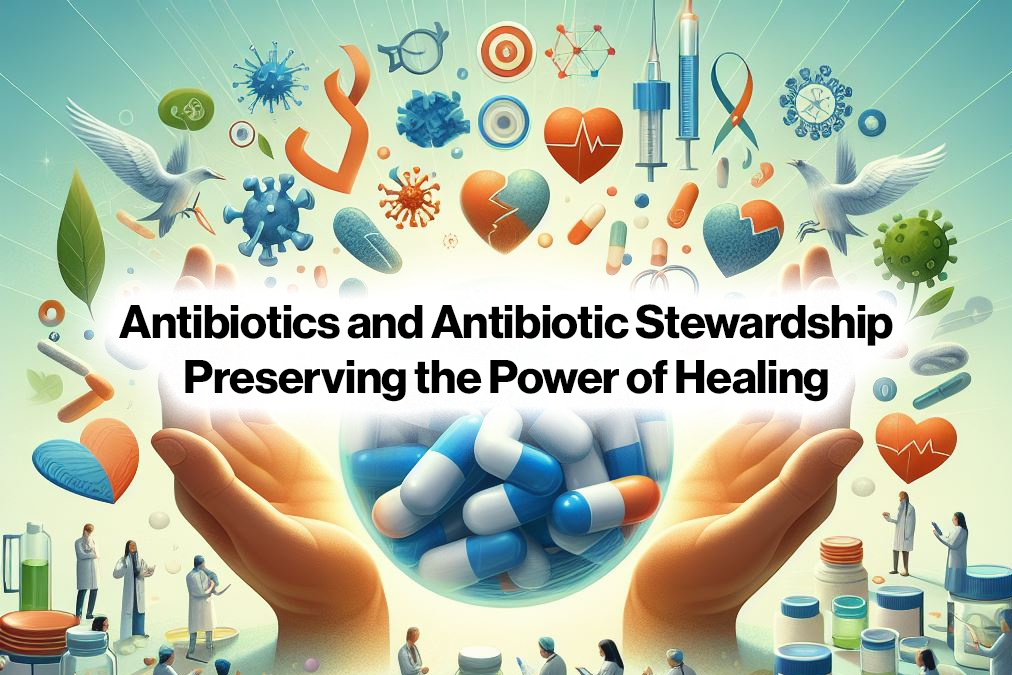Introduction
In the realm of modern medicine, antibiotics have revolutionized the way we combat bacterial infections, saving countless lives and reducing the burden of once-deadly diseases. However, with great power comes great responsibility. The escalating issue of antibiotic resistance has shed light on the urgent need for antibiotic stewardship, a comprehensive strategy to ensure the judicious use of antibiotics, preserving their efficacy for generations to come.
The Marvel of Antibiotics
Antibiotics, often referred to as the “miracle drugs,” have played an integral role in modern medicine since their discovery. They work by either killing bacteria directly or impeding their growth, effectively eradicating infections that once posed significant threats. Diseases like pneumonia, tuberculosis, and streptococcus, which once carried high mortality rates, have now become manageable thanks to these remarkable medications.
The Emerging Challenge of Antibiotic Resistance
While antibiotics have undoubtedly transformed healthcare, their overuse and misuse have given rise to a pressing concern – antibiotic resistance. This phenomenon occurs when bacteria evolve and adapt, becoming impervious to the effects of antibiotics. The more these drugs are used indiscriminately, the greater the chances of bacteria developing resistance mechanisms. This has led to the emergence of “superbugs,” which are resistant to multiple antibiotics, making infections difficult, if not impossible, to treat.
The Essence of Antibiotic Stewardship
Antibiotic stewardship is a multifaceted approach designed to tackle the issue of antibiotic resistance head-on. This strategy focuses on optimizing antibiotic use to ensure maximum effectiveness while minimizing adverse outcomes. Here are some key pillars of effective antibiotic stewardship:
1. Education and Awareness
Raising awareness among healthcare professionals, patients, and the general public is crucial. Education empowers individuals to understand the appropriate use of antibiotics, emphasizing that these drugs are not effective against viral infections like the common cold or flu.
2. Guidelines and Protocols
Healthcare institutions must establish clear guidelines for prescribing antibiotics. These guidelines should be evidence-based and regularly updated to reflect the latest scientific advancements. Implementing protocols ensures that antibiotics are prescribed only when absolutely necessary.
3. Diagnostic Advancements
Rapid and accurate diagnostics are pivotal in identifying the causative agents of infections. Advanced diagnostic tools help healthcare providers pinpoint the exact pathogen, allowing for targeted and effective antibiotic treatment, reducing the need for broad-spectrum antibiotics.
4. Collaboration and Communication
Effective communication among healthcare professionals, patients, and caregivers is crucial. This ensures that everyone involved is on the same page regarding the necessity, duration, and potential side effects of antibiotic therapy.
5. Monitoring and Evaluation
Continuous monitoring of antibiotic usage and its outcomes is essential for assessing the success of stewardship programs. By tracking trends in antibiotic resistance, healthcare providers can adjust their strategies accordingly.
The Path Forward
The battle against antibiotic resistance is ongoing, but antibiotic stewardship offers a glimmer of hope. By prioritizing responsible antibiotic use, we can slow down the emergence of drug-resistant bacteria and preserve these invaluable medications for generations to come.
If you’re interested in learning more about effective strategies to boost traffic on your website, visit The Insider’s Views for insightful information on SEO.
In conclusion, antibiotics have been a cornerstone of modern medicine, revolutionizing healthcare practices. However, the threat of antibiotic resistance requires a concerted effort through antibiotic stewardship. By raising awareness, adhering to guidelines, embracing

Leave a Reply